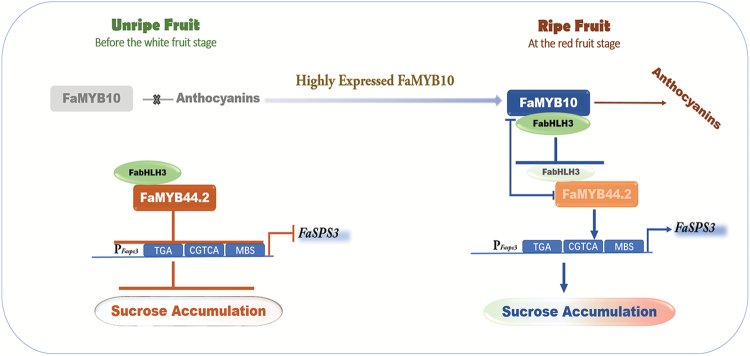Fig. 10.
Hypothetical model of the role of FaMYB44.2 in the regulation of FaSPS3 during fruit ripening. FaSPS3 is the central structural gene involved in sucrose accumulation; its high level of expression contributes to ripening-related sucrose accumulation. In unripe fruit, FaMYB44.2 and its co-repressor FabHLH3 form a complex that represses the expression of FaSPS3. Due to the absence of FaMYB10, this repression is strong, and thus the expression of FaSPS3 remains at low levels and the sucrose content is low. As fruit ripening progresses, at the white fruit stage, FaMYB10 is present in strawberry fruits and its expression remains at higher levels than FaMYB44.2 during the subsequent ripening stages. High levels of FaMYB10 reverse the repression of FaMYB44.2 and competitively bind to FabHLH3, a co-repressor of FaMYB44.2, to further induce the expression of FaSPS3; thus, the fruits tend to accumulate sucrose. In addition, FaMYB10 limits the expression of FaMYB44.2 and vice versa, thereby balancing ripening-related metabolism. Eventually, the antagonistic interplay between FaMYB10 and FaMYB44.2 leads to the accumulation of both sucrose and anthocyanins in ripe strawberry fruits. Arrows indicate activation and T-bars show repression. This model was constructed based on the results of the current study, as well as those of Vallarino et al. (2015) and Lin-Wang et al. (2014).

